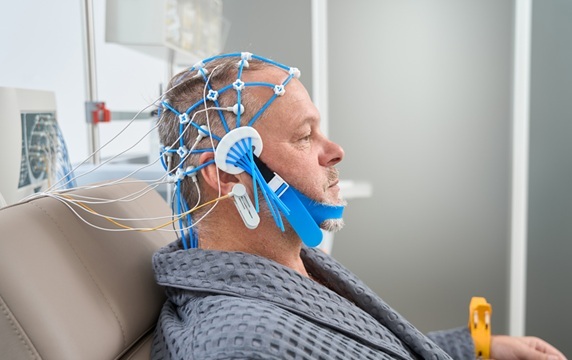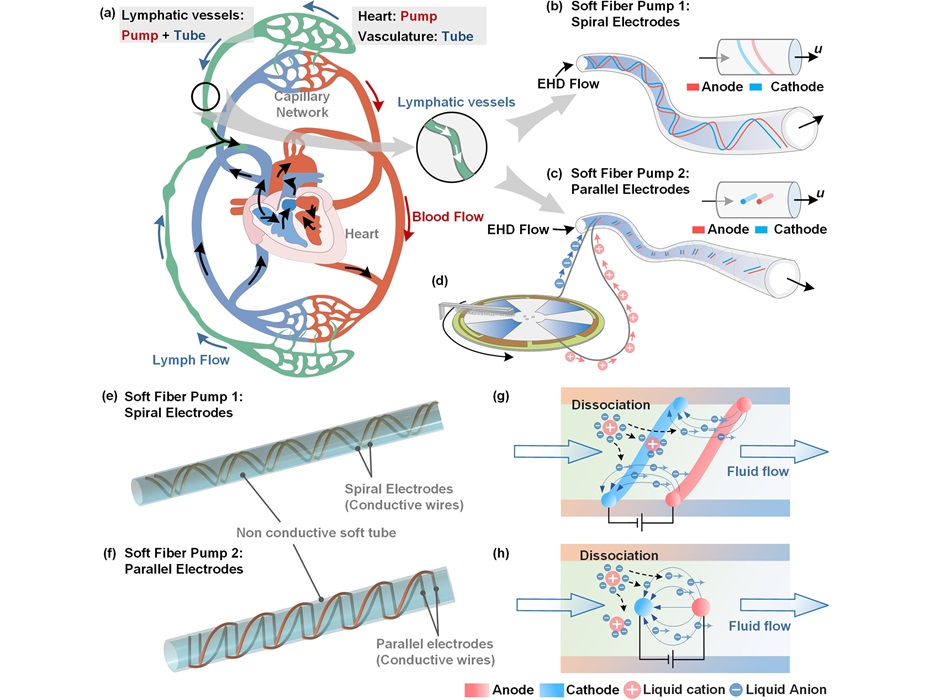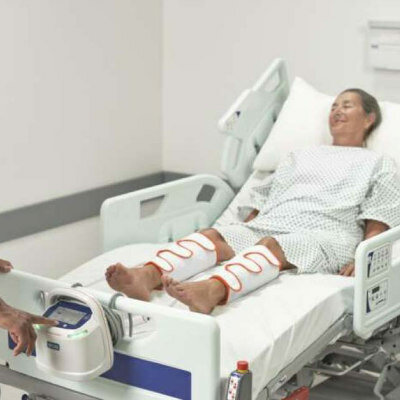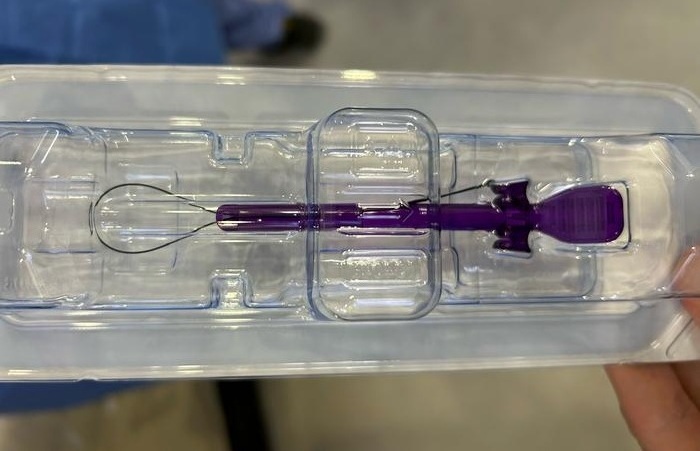Robotic Next Generation Sequencing Platform Accurately Screens Thousands of COVID-19 Samples at Once
|
By HospiMedica International staff writers Posted on 04 Mar 2021 |

Image: Jeff Wrana, left, is seen in this undated file photo at the Lunenfeld-Tanenbaum Research Institute in Toronto, Canada (Photo courtesy of Sinai Health)
A robotics platform to screen thousands of COVID-19 samples at once has the potential to revolutionize how labs track the spread of viruses and other pathogens, according to new findings.
The study by researchers from the Lunenfeld-Tanenbaum Research Institute (LTRI) at Sinai Health (Toronto, ON, Canada) found that their next-generation, ultra-high-throughput sequencing platform, called C19-SPAR-Se, has a sensitivity rate greater than 95% in positive cases during peak onset. The platform is also cost-effective. The study notes it only costs about USD 8 per test when running thousands of samples at once, as the cost per sample decreases due to economies of scale.
"Identifying positive samples quickly and accurately is critical in beating this pandemic," said Dr. Jeff Wrana, senior investigator at the LTRI and professor in the Department of Molecular Genetics at the University of Toronto. "With new and potentially dangerous variants now circulating, this is a platform that is scalable, automated and capable of analyzing thousands of COVID-19 patient samples in a single instrument run."
Related Links:
Lunenfeld-Tanenbaum Research Institute
The study by researchers from the Lunenfeld-Tanenbaum Research Institute (LTRI) at Sinai Health (Toronto, ON, Canada) found that their next-generation, ultra-high-throughput sequencing platform, called C19-SPAR-Se, has a sensitivity rate greater than 95% in positive cases during peak onset. The platform is also cost-effective. The study notes it only costs about USD 8 per test when running thousands of samples at once, as the cost per sample decreases due to economies of scale.
"Identifying positive samples quickly and accurately is critical in beating this pandemic," said Dr. Jeff Wrana, senior investigator at the LTRI and professor in the Department of Molecular Genetics at the University of Toronto. "With new and potentially dangerous variants now circulating, this is a platform that is scalable, automated and capable of analyzing thousands of COVID-19 patient samples in a single instrument run."
Related Links:
Lunenfeld-Tanenbaum Research Institute
Latest COVID-19 News
- Low-Cost System Detects SARS-CoV-2 Virus in Hospital Air Using High-Tech Bubbles
- World's First Inhalable COVID-19 Vaccine Approved in China
- COVID-19 Vaccine Patch Fights SARS-CoV-2 Variants Better than Needles
- Blood Viscosity Testing Can Predict Risk of Death in Hospitalized COVID-19 Patients
- ‘Covid Computer’ Uses AI to Detect COVID-19 from Chest CT Scans
- MRI Lung-Imaging Technique Shows Cause of Long-COVID Symptoms
- Chest CT Scans of COVID-19 Patients Could Help Distinguish Between SARS-CoV-2 Variants
- Specialized MRI Detects Lung Abnormalities in Non-Hospitalized Long COVID Patients
- AI Algorithm Identifies Hospitalized Patients at Highest Risk of Dying From COVID-19
- Sweat Sensor Detects Key Biomarkers That Provide Early Warning of COVID-19 and Flu
- Study Assesses Impact of COVID-19 on Ventilation/Perfusion Scintigraphy
- CT Imaging Study Finds Vaccination Reduces Risk of COVID-19 Associated Pulmonary Embolism
- Third Day in Hospital a ‘Tipping Point’ in Severity of COVID-19 Pneumonia
- Longer Interval Between COVID-19 Vaccines Generates Up to Nine Times as Many Antibodies
- AI Model for Monitoring COVID-19 Predicts Mortality Within First 30 Days of Admission
- AI Predicts COVID Prognosis at Near-Expert Level Based Off CT Scans
Channels
Critical Care
view channel
EEG-Based AI Technology Accurately Diagnoses Alzheimer’s and Dementia
Dementia, including Alzheimer’s disease, is difficult to diagnose early, even though timely detection is critical for slowing disease progression and preserving quality of life. Symptoms often overlap... Read more
Robot Lymphatic System Paves Way for Self-Powered Wearables and Machines
Soft robots and wearable devices promise safer interaction with people and better adaptability to complex environments, but powering these systems remains a major challenge. Most rely on bulky batteries... Read moreSurgical Techniques
view channelLaparoscopic Surgery Improves Outcomes for Severe Newborn Liver Disease
Biliary atresia is a rare but life-threatening liver condition in newborns that blocks bile flow and leads to progressive liver damage if not treated early. Surgery is typically performed within the first... Read moreNovel Endoscopy Technique Provides Access to Deep Lung Tumors
Detecting lung cancer early can save lives, but diagnosing small tumors deep in the outer regions of the lungs remains a major clinical challenge. Although CT scans frequently identify tiny suspicious... Read morePatient Care
view channel
Revolutionary Automatic IV-Line Flushing Device to Enhance Infusion Care
More than 80% of in-hospital patients receive intravenous (IV) therapy. Every dose of IV medicine delivered in a small volume (<250 mL) infusion bag should be followed by subsequent flushing to ensure... Read more
VR Training Tool Combats Contamination of Portable Medical Equipment
Healthcare-associated infections (HAIs) impact one in every 31 patients, cause nearly 100,000 deaths each year, and cost USD 28.4 billion in direct medical expenses. Notably, up to 75% of these infections... Read more
Portable Biosensor Platform to Reduce Hospital-Acquired Infections
Approximately 4 million patients in the European Union acquire healthcare-associated infections (HAIs) or nosocomial infections each year, with around 37,000 deaths directly resulting from these infections,... Read moreFirst-Of-Its-Kind Portable Germicidal Light Technology Disinfects High-Touch Clinical Surfaces in Seconds
Reducing healthcare-acquired infections (HAIs) remains a pressing issue within global healthcare systems. In the United States alone, 1.7 million patients contract HAIs annually, leading to approximately... Read moreHealth IT
view channel
EMR-Based Tool Predicts Graft Failure After Kidney Transplant
Kidney transplantation offers patients with end-stage kidney disease longer survival and better quality of life than dialysis, yet graft failure remains a major challenge. Although a successful transplant... Read more
Printable Molecule-Selective Nanoparticles Enable Mass Production of Wearable Biosensors
The future of medicine is likely to focus on the personalization of healthcare—understanding exactly what an individual requires and delivering the appropriate combination of nutrients, metabolites, and... Read moreBusiness
view channel
Philips and Masimo Partner to Advance Patient Monitoring Measurement Technologies
Royal Philips (Amsterdam, Netherlands) and Masimo (Irvine, California, USA) have renewed their multi-year strategic collaboration, combining Philips’ expertise in patient monitoring with Masimo’s noninvasive... Read more
B. Braun Acquires Digital Microsurgery Company True Digital Surgery
The high-end microsurgery market in neurosurgery, spine, and ENT is undergoing a significant transformation. Traditional analog microscopes are giving way to digital exoscopes, which provide improved visualization,... Read more
CMEF 2025 to Promote Holistic and High-Quality Development of Medical and Health Industry
The 92nd China International Medical Equipment Fair (CMEF 2025) Autumn Exhibition is scheduled to be held from September 26 to 29 at the China Import and Export Fair Complex (Canton Fair Complex) in Guangzhou.... Read more


















